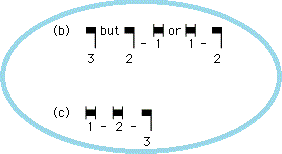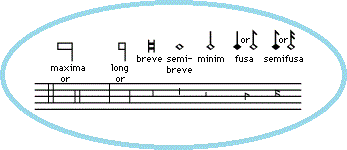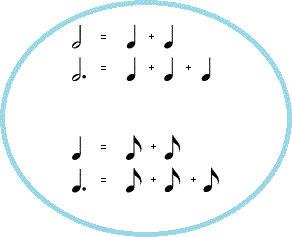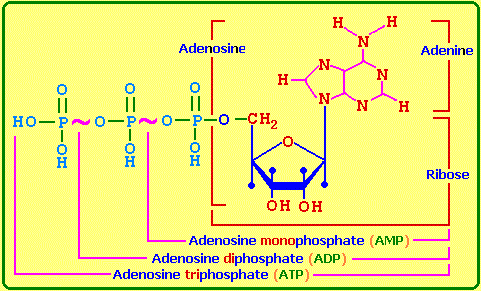
Page 17
http://threesology.org
Note: the contents of this page as well as those which precede and follow, must be read as a continuation and/or overlap in order that the continuity about a relationship to/with the typical dichotomous assignment of Artificial Intelligence (such as the usage of zeros and ones used in computer programming) as well as the dichotomous arrangement of the idea that one could possibly talk seriously about peace from a different perspective... will not be lost (such as war being frequently used to describe an absence of peace and vice-versa). However, if your mind is prone to being distracted by timed or untimed commercialization (such as that seen in various types of American-based television, radio, news media and magazine publishing... not to mention the average classroom which carries over into the everyday workplace), you may be unable to sustain prolonged exposures to divergent ideas about a singular topic without becoming confused, unless the information is provided in a very simplistic manner.
As was indicated on page two: AI and 3sology page2, the right hemisphere attributes such as music are particularly two-pattern oriented. But when the "twos" are analyzed by the predominantly oriented three-patterned left hemisphere, the "twos" begin to take on a "three" appearance or function or both. While we can note the existence of several two-patterned references in music such as major/minor, loud/quiet, etc., we must also note that the three-patterned structure of the ear is being filtered through a two-patterned right hemisphere... though some people may be using part of the right hemisphere instead. Nonetheless, despite the insistence of the right hemisphere to interpret in patterns-of-two, the left hemisphere has interpreted the existence of a triadic structure. Let's take a brief look at the development of European music notation:
Mensural notation The freeing of ligatures from considerations of context occurred during the early
13th century. Time values for ligatures, single notes, and rests were codified around
1260 by the influential theorist Franco of Cologne. These note symbols provided the basis for notation from the late 13th to the late 15th century. This system, called mensural notation, was based on several fundamental principles that determined the value of a note relative to that of its neighbours. In the terminology of mensural notation a given note might be either perfect—i.e., divided into three notes of the next lesser time value; or imperfect—i.e., divided into two notes of the next lesser value. Thus, as in part (a) of the example below, a long might be perfect, containing three breves; or imperfect, containing two breves.   The time-value relationships between breve and long similarly applied to the other pairs of notes:
As the system of mensural notation evolved, another device, coloration, came into use. If a composer wished to render a potentially perfect note imperfect, he could write it in red, or as a hollow note: ...these two devices had, however, various other, less common meanings. About 1400, hollow note shapes were adopted where full black notes had hitherto been used, and full black served as coloration. The notes then current and their corresponding rests were as follows:  Transition to modern staff notation In 16th-century manuscripts and, later, in printed music, the diamond-headed notes became rounded. Ligatures were used less often in the later 15th century. The principles of perfection and imperfection gave way to the modern relationship of 2 to 1 between adjacent note values, with the dot adding an extra half value to give a 3 to 1 relationship.  20th-century notation Two developments in musical style in the 20th century have placed great strain upon staff notation: integral serialism—in which the music is controlled by a mathematical system—and indeterminacy, or chance music. In the former, every note in a texture may have its individual dynamic marking and type of attack (for example, in Olivier Messiaen's Mode de valeurs et d'intensités and in parts of Structures I and II of Pierre Boulez). There may also be extensive use of unconventional playing techniques. Since staff notation indicates volume, attack, and technical effects in a comparatively clumsy manner, the written page becomes cluttered and unclear. In indeterminate and aleatory music (the latter type allowing the performer a limited degree of freedom), the notation must offer choices to the performer or be deliberately imprecise. Staff notation is for these purposes often too specific. In addition, electronic music, composed with such devices as graphs, mathematical symbols, and diagrams, is not easily translated into a readable “score” for publication. New systems Notation, in face of this, has moved in two directions: toward adaptation of staff notation and toward the devising of new notational systems. Music using microtonal intervals (less than a semitone) has tended to adapt by modifying the standard accidental signs—meaning one-third sharp, two-thirds sharp, and so on (e.g., in Krzysztof Penderecki's Anaklasis).  So-called space time notation is a further adaptation that reasserts the graphic nature of staff notation. It abandons symbolic indication of note values and replaces it by the spacing of note heads horizontally on the staff, accompanied by an instruction such as “1 inch = 1 second.” The principle may then be amplified by using different note heads: ...to signify short, medium, and long sustaining of a note, thus obviating the use of rests, and by beaming together notes to be performed in one breath or bow (e.g., Witold Lutoslawski's Trois poèmes d'Henri Michaux and John Cage's Music of Changes). Indeterminacy Indeterminate music requires constant experimentation with notation. A composer may offer directions for one element of the music—as rhythm or pitch contour—and leave the performer to improvise the remaining elements. Or he may simply describe the general character of a passage by resorting to a specially designed symbol, a verbal description, or even an impressionistic drawing (as in Earle Brown's Hodograph). At the extreme, John Cage supplies “materials” (lines, dots, shapes) and leaves the performer to attach musical significance to them. For electronic music, published scores have so far adopted either strict graph form (Karlheinz Stockhausen, Electronic Study II; see illustration) or pictorial form, using patterned drawings to represent different timbres (as in Henri Pousseur's Electre [see ] and Stockhausen's Kontakte). Source: "Musical Notation." Encyclopædia Britannica Ultimate Reference Suite, 2013. |
Now we come to a point in which we must offer some rudimentary model for guiding our efforts along the path to creating a viable trinary computational system involving a [1,2,3... 3,... and 3 to 1 ratio] formula... even though some readers may well prefer a working model in order to copy from in a sort of reverse engineering way so as to short-cut expenditures of their own resources. Nonetheless, in this initial efforts we must design the amenities of a language around which the external framework will then be designed accordingly. Like an auditory process involving electrical, mechanical and fluidic properties, we must be open to the possible necessity of using multiple variants as well. We can not be like those who establish a trinary perspective then alter this to a 3 in 1 idea, but maintain it as a sacred idea without equal; if we are to transgress the boundaries of present computational design. For example, to advance the trinary idea of a (Christian) Trinity that then becomes defined as being of the same substance... yet is not identified as a symbolic representation of the Sun's three "moments" (dawn- noon- dusk); is a heresy to the notion that freedom of thought is permissible. We must transgress the old binary orientations.
In our comparison of physiology to present computer design in hopes to reveal a more promising architecture, we must realize that the analogy can be taken to an unnecessary replication when first beginning. For example, if our initial system is not to be concerned with equilibrium, there is no need for a gyroscopic apparatus, such as the three semi-circular canals of the ear:
The inner ear contains parts (the non-auditory labyrinth or vestibular organ) that are sensitive to acceleration in space, rotation, and orientation in the gravitational field. Rotation is signaled by way of the semicircular canals, three bony tubes in each ear that lie embedded in the skull roughly at right angles to each other. These canals are filled with fluid called endolymph; in the ampulla of each canal are receptor cells with fine hairs that project up into the fluid to be displaced as the endolymph lags behind when rotation begins. When rotation is maintained at a steady velocity, the fluid catches up, and stimulation of the hair cells no longer occurs until rotation suddenly stops, again circulating the endolymph. Whenever the hair cells are thus stimulated, one normally experiences a sensation of rotation in space. During rotation one exhibits reflex nystagmus (back-and-forth movement) of the eyes. Slow displacement of the eye occurs against the direction of rotation and serves to maintain the gaze at a fixed point in space; this is followed by a quick return to the initial eye position in the direction of the rotation. Stimulation of the hair cells in the absence of actual rotation tends to produce an apparent “swimming” of the visual field, often associated with dizziness and nausea. Source: "Sensory reception, human." Encyclopædia Britannica Ultimate Reference Suite, 2013. |
If by a process of elimination we come to a point of deciding that a "functional" brain for later application is of primary importance, because we will be able to attach other appendages and capacities to it; we must decide if the two hemispheres of our brain constitutes a fundamental binary system, or does the presence of a reptilian brain detail the existence of a trinary system? Surely the Reptilian brain may have earlier evolutionary substrates of itself, but by confining the discussion to the development of these three, the development from a reptilian brain to an old mammal brain, constitutes a former binary system atop a "monary" system. However, whether we use the New Mammal- Old Mammal- Reptilian ensemble or the New Mammal- Old Mammal systems to describe the influence of a "threes" presence in our ideas, the fact remains is that there is a presence... whether or not the existence is widely known. If the occasion for three-patterned ideas comes from a three-patterned genetic or anatomy, and must be filtered through a binary brain; to what extent will a binary character try to mold a three-patterned perspective into a two-patterned portrayal? By developing a three-patterned idea of dichotomy such as win-win, win-lose, lose-lose?
In our analysis, we point to the processes of speech, voice and energy in an electric circuit. With respect to energy, the human body may be seen as a type of leathery container of electrolytes supported by an articulating skeleton, relying on molecular processes for energy conversion and transference. However, this type of supportive hardware is not needed in some environments:
Bone is found only in vertebrates, and, among modern vertebrates, it is found only in bony fish and higher classes. Although ancestors of the cyclostomes and elasmobranchs had armoured headcases, which served largely a protective function and appear to have been true bone, modern cyclostomes have only an endoskeleton, or inner skeleton, of noncalcified cartilage and elasmobranchs a skeleton of calcified cartilage. Although a rigid endoskeleton performs obvious body supportive functions for land-living vertebrates, it is doubtful that bone offered any such mechanical advantage to the teleost (bony fish) in which it first appeared, for in a supporting aquatic environment great structural rigidity is not essential for maintaining body configuration. The sharks and rays are superb examples of mechanical engineering efficiency, and their perseverance from the Devonian Period attests to the suitability of their nonbony endoskeleton. In modern vertebrates, true bone is found only in animals capable of controlling the osmotic and ionic composition of their internal fluid environment. Marine invertebrates exhibit interstitial fluid compositions essentially the same as that of the surrounding seawater. Early signs of regulability are seen in cyclostomes and elasmobranchs, but only at or above the level of true bone fishes does the composition of the internal body fluids become constant. The mechanisms involved in this regulation are numerous and complex and include both the kidney and the gills. Fresh and marine waters provide abundant calcium but only traces of phosphate; because relatively high levels of phosphate are characteristic of the body fluids of higher vertebrates, it seems likely that a large, readily available internal phosphate reservoir would confer significant independence of external environment on bony vertebrates. With the emergence of terrestrial forms, the availability of calcium regulation became equally significant. Along with the kidney and the various component glands of the endocrine system, bone has contributed to development of internal fluid homeostasis—the maintenance of a constant chemical composition. This was a necessary step for the emergence of terrestrial vertebrates. Furthermore, out of the buoyancy of water, structural rigidity of bone afforded mechanical advantages that are the most obvious features of the modern vertebrate skeleton. Chemical composition and physical properties Depending upon species, age, and type of bone, bone cells represent up to 15 percent of the volume of bone; in mature bone in most higher animals, they usually represent only up to 5 percent. The nonliving intercellular material of bone consists of an organic component called collagen (a fibrous protein arranged in long strands or bundles similar in structure and organization to the collagen of ligaments, tendons, and skin), with small amounts of proteinpolysaccharides, glycoaminoglycans (formerly0 known as mucopolysaccharides) chemically bound to protein and dispersed within and around the collagen fibre bundles, and an inorganic mineral component in the form of rod-shaped crystals. These crystals are arranged parallel with the long axes of collagen bundles and many actually lie in voids within the bundles themselves. Source: "Bone." Encyclopædia Britannica Ultimate Reference Suite, 2013. |
Collagen is the structural protein of bones, tendons, ligaments, and skin. For many years collagen was considered to be insoluble in water. Part of the collagen of calf skin, however, can be extracted with citrate buffer at pH 3.7. A precursor of collagen called procollagen is converted in the body into collagen. Procollagen has a molecular weight of 120,000. Cleavage of one or a few peptide bonds of procollagen yields collagen, which has three subunits, each with a molecular weight of 95,000; therefore, the molecular weight of collagen is 285,000 (3 × 95,000). The three subunits are wound as spirals around an elongated straight axis. The length of each subunit is 2,900 angstroms, and its diameter is approximately 15 angstroms. The three chains are staggered, so that the trimer has no definite terminal limits. Collagen differs from all other proteins in its high content of proline and hydroxyproline. Hydroxyproline does not occur in significant amounts in any other protein except elastin. Most of the proline in collagen is present in the sequence glycine–proline-X, in which X is frequently alanine or hydroxyproline. Collagen does not contain cystine or tryptophan and therefore cannot substitute for other proteins in the diet. The presence of proline causes kinks in the peptide chain and thus reduces the length of the amino acid unit from 3.7 angstroms in the extended chain of the β-structure to 2.86 angstroms in the collagen chain. In the intertwined triple helix, the glycines are inside, close to the axis; the prolines are outside. Source: "Protein." Encyclopædia Britannica Ultimate Reference Suite, 2013. |
For The Reader: Please remember to read with a "threes" orientation in mind or you will overlook the recurrence of this pattern as an applicable resource with a commodity stretching far beyond the taffy pulls of conventional economics. Needless to say even though I have stopped to make mention of if, for some, the recurrence will be looked upon with as much significance as watching an ant pile, flock of birds, or forest of trees. They may be wistfully mesmerized like a person staring into campfire flames which evoke the seizure-like primitive absorptions of over self-indulgence.
(ATP is an) energy-carrying molecule found in the cells of all living things. ATP (adenosine triphosphate) captures chemical energy obtained from the breakdown of food molecules and releases it to fuel other cellular processes. Cells require chemical energy for three general types of tasks: to drive metabolic reactions that would not occur automatically; to transport needed substances across membranes; and to do mechanical work, such as moving muscles. ATP is not a storage molecule for chemical energy; that is the job of carbohydrates, such as glycogen, and fats. When energy is needed by the cell, it is converted from storage molecules into ATP. ATP then serves as a shuttle, delivering energy to places within the cell where energy-consuming activities are taking place. ATP is a nucleotide that consists of three main structures: the nitrogenous base, adenine; the sugar, ribose; and a chain of three phosphate groups bound to ribose. Source: "adenosine triphosphate." Encyclopædia Britannica Ultimate Reference Suite, 2013. |
3 primary cellular energy molecules:

- AMP = Adenosine- Mono- Phosphate: (Mono = one)
- ADP = Adenosine- Di-
Phosphate: (Di = two)
- ATP = Adenosine- Tri- Phosphate (Tri = three)
(ATP is primary energy source for cellular processes.)
Source: Bio-physiological 3s page 1
Let us say, for the sake of discussion, that the human body runs on low voltage Direct Current, but a computer relies on household high voltage Alternating Current, except of course were batteries are used, such as in lap-tops. If humans are running on a dominant binary code, than our present efforts are elementary exercise, but may one day result in trinary models of cognition. If however, the human body is using a dominant trinary code, than the present model is a primitive organism that we must initiate the evolution thereof, unless of course you prefer the "poof" or "shazam" idea attributed to an unseen god. Then again, perhaps humans are god in this instance... and the "poof" (not "proof") is to be expressed in our experiments where circuits are sometimes fried, leaving us humbled, but resiliently determined.
However, in as much as some may want to say we need to use small amounts of current in a small way, history has presented us with examples that many former life models used a lot of power to feed large factories called dinosaurs. The smaller one's seemed to have won out, that is if we accept the idea that the birds of today are the descendants of dinosaurs. Such may be the case for large humans to be replaced by smaller ones, though the advent of large nations of smaller bodies seems to be an instance in which they too will have to be down-sized because of over-consumption of resources from which energy is derived.... but we can work on the energy situation down the road in our discussion.
If we use an electrical- genetic- physics model as a background image to a possible new computational model, we are still left with designing a language. Instead of adopting the development of a language script to an electric-only reality, we need to take the position of developing a basic language as an amenity over-which an architecture may be laid. Will it be a spoken language, or a language of signs because the "body" of our computer is viewed from a deaf, dumb, and blind perspective?
Here's another example of the "eight" value, that may be more accurate to describe it as an unfinished series of three 3's (3-3-2):
|
First, an atom may complete its octet by sharing more than one pair of electrons with a bonded neighbour. Two shared pairs of electrons, represented by a double dash (=), form a double bond. Double bonds are found in numerous compounds, including carbon dioxide: Three shared pairs of electrons are represented by a triple dash (≡) and form a triple bond. Triple bonds are found in, for example, carbon monoxide, nitrogen molecules, and acetylene, shown, respectively, as: A double bond is stronger than a single bond, and a triple bond is stronger than a double bond. However, a double bond is not necessarily twice as strong as a single bond, nor is a triple bond necessarily three times as strong. Quadruple bonds, which contain four shared pairs of electrons, are rare but have been identified in some compounds in which two metal atoms are bonded directly together. Resonance There is sometimes an ambiguity in the location of double bonds. This ambiguity is illustrated by the Lewis structure for ozone (O3). The following are two possible structures: In such cases, the actual Lewis structure is regarded as a blend of these contributions and is written: The blending together of these structures is actually a quantum mechanical phenomenon called resonance, which will be considered in more detail below. At this stage, resonance can be regarded as a blending process that spreads double-bond character evenly over the atoms that participate in it. In ozone, for instance, each oxygen-oxygen bond is rendered equivalent by resonance, and each one has a mixture of single-bond and double-bond character (as indicated by its length and strength). Source: "chemical bonding." Encyclopædia Britannica Ultimate Reference Suite, 2013. |
Catenation Carbon is unique among the elements in the almost infinite capacity of its atoms to bond to each other in long chains, a process called catenation (Latin catena, chain). This characteristic reflects the strength of the bond between adjacent carbon atoms in the molecule, both in relationship to similar bonds involving other elements of the carbon family and in relationship to bonds between carbon atoms and atoms of many other elements. Only the carbon–hydrogen, carbon–fluorine, and carbon–oxygen single bonds (C-H, C-F, and C-O) are stronger than the carbon–carbon single bond (C-C), and each of these is weaker than the carbon–carbon multiple bonds (C=C or C≡C). On the other hand, the silicon–silicon single bond (Si-Si) is weaker than other single bonds involving an atom of other elements with the silicon atom. The same is undoubtedly true of the germanium–germanium and tin–tin single bonds (Ge-Ge, Sn-Sn) in relationship to single covalent bonds between atoms of these elements and atoms of other elements. Experimentally, there appears to be no practical upper limit to catenation involving carbon. This phenomenon in three dimensions produces the diamond and in two dimensions the layers in graphite. Catenation is also exhibited to a high degree by elemental silicon, germanium, and tin, but it is strictly limited in compounds of these elements; silicon may have up to 14 atoms in a chain; germanium, 9; and tin, 2 or 3 only, largely in hydrides (compounds containing hydrogen). Double and triple bonds in catenated arrangements are limited to carbon. Source: "Carbon group element." Encyclopædia Britannica Ultimate Reference Suite, 2013. |
Subject page first Originated (saved into a folder): Thursday, November 13, 2014... 5:50 AM
Page re-Originated: Sunday, 24-Jan-2016... 08:51 AM
Initial Posting: Saturday, 13-Feb-2016... 10:59 AM
Updated Posting: Sunday, 23-June-2019... 3:25 PM
Herb O. Buckland
herbobuckland@hotmail.com